China # 3 – Along the Taklamakan Desert’s Southern Silk Road – September 2014
A little sad that we had missed the knife factories in Yengisar, but it wasn’t really on our major must-see list. We were following the southern edge of the infamous Taklamakan Desert. In at least one of the Chinese languages, Taklamakan means, “If you go in, you won’t come out”. Hummm?
After spending an hour and a half driving around Yecheng in the dark and being stopped by a SWAT team, we finally found the Electric Hotel that allowed foreigners, (many did not), and a safe enclosed parking lot. We were advised not to venture outside the hotel grounds at night for our safety.
Hotan, a famous jade town
An early start in the morning brought us to the historic oasis town of Hotan (Hetian), strategically located at the junction of the southern (and most ancient) branch of the Silk Road joining the West with one of the main routes from India and Tibet to Central Asia and China. It was an ideal meeting place where not only goods, but also technologies, philosophies, and religions were exchanged from one culture to another.
Where there is water there is life. Surrounded by the Karakash River and the White Jade River flowing from the distant foothills of the Himalayas, the Hotan area prospered and survived on the edge of the vast Taklamakan Desert. Hotan artists and craftsman are known for their prized carpets and carvings, and for the “mutton fat” jade still being collected from the White Jade River. Of course we never get tired of exploring new markets, but after our recent visits to some of the biggest in Asia, like Kashgar, a stop at the famous jade market was not on our agenda. OK, Green loved jade so it was easy for her to convince us. We did stop at the food market to see what edible treasures we could find, but the Jade Market was definitely amazing. We were the only Westerners in town. Noted in our Lonely Planet China guide book, as the “Sunday Jade Market”, it is a very busy place every day of the week. While serious jade buyers scrutinized the overwhelming selection, food vendors were as interesting, with barbecue grills full of juicy lamb Shish Kebabs or Shashlik and rolling buffets of tempting dishes to go.
Jaded” out, figuratively speaking, we headed west just in time to find a nice gravel pit for the night, a quiet place for Green to set up her comfy MSR tent for the first time with a double layer of Therm-a-Rest sleeping pads. She thought it was cool that it was “green”. Monika cooked up a delicious lamb stew and we slept well——except someone back home had put a bug in Green’s ear that there were wolves in the desert, so she ended up sleeping in a bed we made for her in the truck’s cab, try as we did to convince her that there was not a wolf for a hundred miles cuz there was nothing for them to eat. Turns out she had never slept in a tent alone, only with other people. No wolves came that night. She got braver and later, we all could laugh about it.
- Where there is water there is life. We entered the Hotan area through an avenue of beautiful popular trees.
- Locals were busy searching for what seemed like an endless supply of jade in the White Jade River.
- Among Chinese, white jade is the most prized.
- Vendors kept their stones sprayed with water to show off their colors.
- The selections of jade were really amazing.
- That would be a cool piece of jade in our front yard!
- Potential buyers seemed to know exactly what they were looking for and gave each piece careful inspection checking for flaws.
- Buying jade was a serious business.
- This lady had beautiful samples of multicolored jade. She gave Monika one as a gift.
- In small workshops artists cut jade in shapes that would later be carved.
- Skilled artists used Dermel tools to carve intricate designs.
- Shops were selling beautiful jade jewelry & carvings, but we never saw a turtle we liked.
- We wished we had bought this beautiful gourd with its intricate carving.
- The smell of fresh grilled lamb filled the air.
- This vendor had a very unique system of cooking juicy Shish Kebabs in a pit grill.
- Carts selling selections of vegetables and noodles were certainly tempting, but we were already full after a couple of Shish Kebabs.
- Sweet watermelon was in season.
- Barbecued corn on the cob was a favorite.
- Oven roasted squash was something different.
- If you were really hungry, how about a serving of chicken feet with a sweet sauce topping?
- Sign of the times. Everyone had a cell phone!
- Some women were busy embroidering gorgeous wall hangings and tablecloths.
- These intricately embroidered skull caps were the local fashion.
- Children always have a way of amusing themselves.
- These guys were walking the market selling sunflower seeds, a popular snack.
- The produce section of the market had the usual grand selection of vegetables and fruit.
- We recognize the long beans, daikon, bitter cucumber and eggplants.
- These must be some kind of a Chinese potato or?
- A basket of ripe figs.
- Another popular mystery fruit. Green said we had to try some, but their name eludes me. They may have been Jujube dates.
- More than fresh eggs. If you look closely the eggs on the left and the right have little embryos in them. Must be a delicacy.
- Another strange delicacy, century eggs are coated with a mixture of clay, wood ash, calcium oxide and salt and stored for 4 to 5 weeks.
- These eggs seemed to have dates on them to indicate when they were fertilized or ?
- The market bakery was busy.
- Nan, Uigur Chinese style.
- These women were busy shucking walnuts. The dark stain is very hard to wash off.
- Green and Monika had to decide which almonds looked the best.
- The fresh crop of walnuts was ready for cracking.
- Fresh lamb and even fresher lamb at a butcher shop along side the road.
- Ok man, as soon as you’re done with your nap can we get back to work? If I didn’t have this wire muzzle on I would bite your foot.
- These overloaded coal trucks were a major hazard. Big chunks of black coal on black pavement were hard to see. Easy to break a spring or something worse if you hit one.
- The forerunner of the new Tesla Model Y.
- Battery-powered MPV, note that both the inside and the roof are stuffed with live sheep.
- Nice flat camp site at the hotel in Hotan, but we were told not to go outside the compound at night. SWAT teams patrolled the streets.
- This rather modern hotel in Hotan even served breakfast.
- No more water, no more trees. We are approaching our turn-off to cross the middle of the infamous Taklamakan Desert. In at least one of Chinese languages, Taklamakan means, “If you go in you won’t come out”.
- This nice gravel pit offered a quiet place for Green to set up her comfy MSR tent with a double layer of Therm-a-Rest sleeping pads.
- Life on the road. Monika cooked up a delicious lamb stew and we slept well. Green’s little home is ready for her first night in a tent by herself. (See text about wolves.)



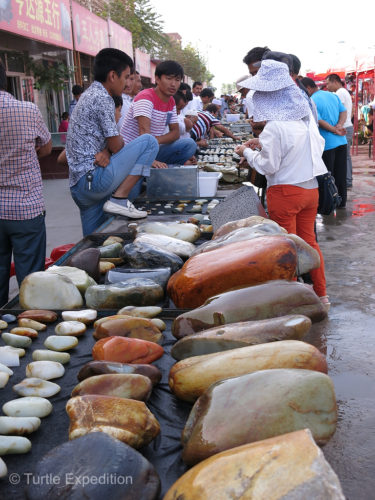
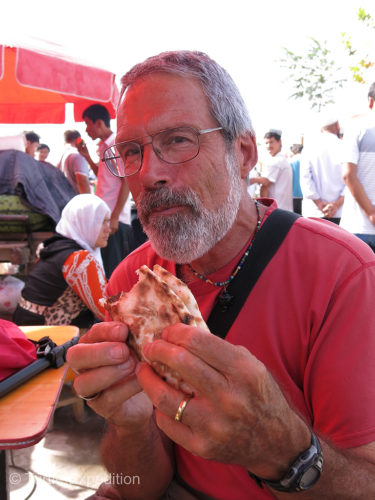
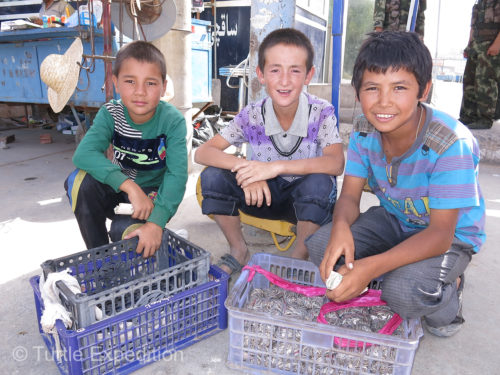
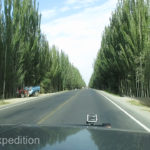
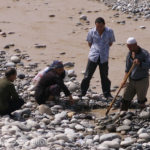
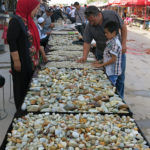
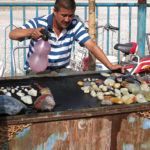
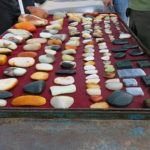
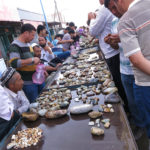
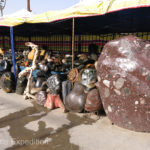
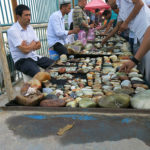
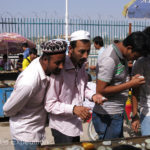
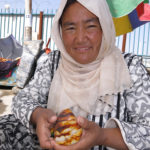
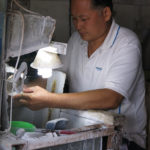
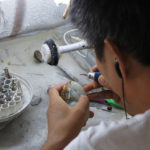
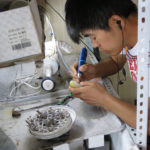
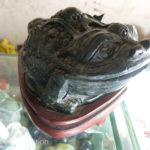
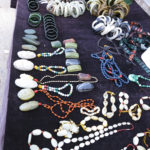
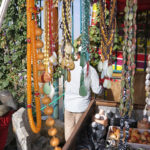
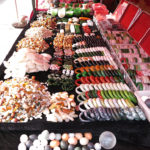
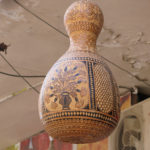
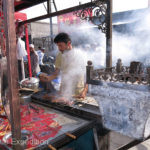
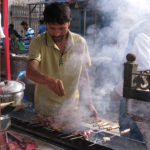
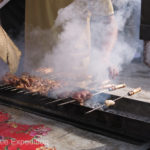
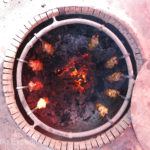
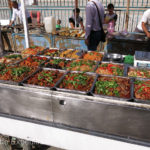
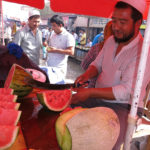
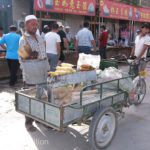
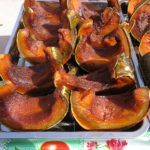
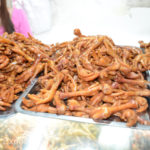

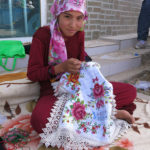
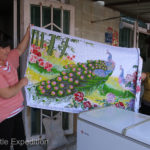
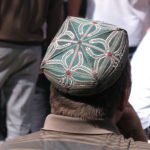
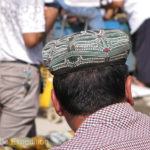
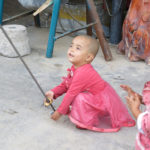

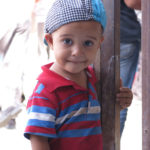
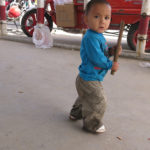
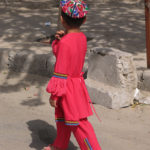
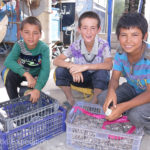
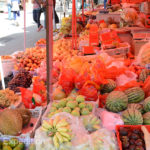
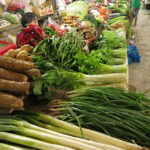
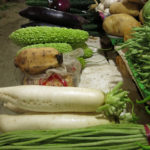
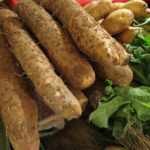
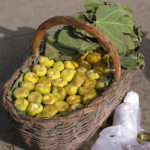
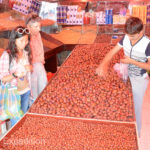
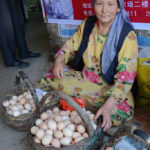
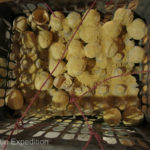
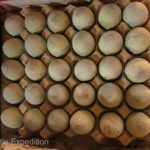
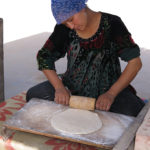
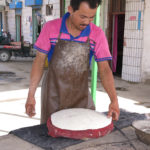
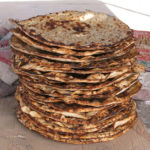
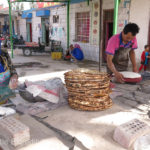
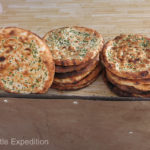
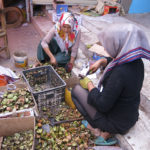
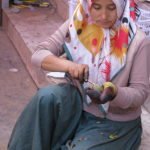
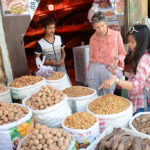
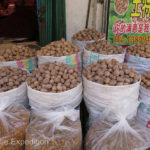
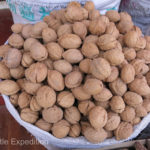
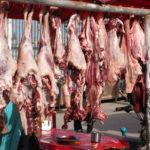
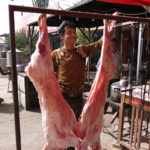
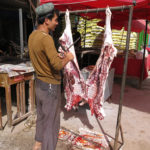
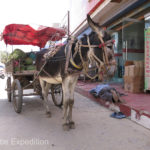
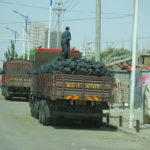
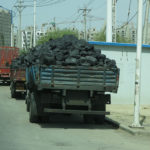
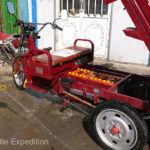
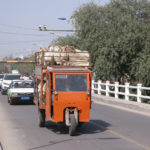
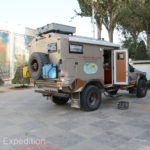
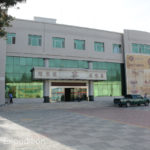
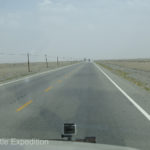
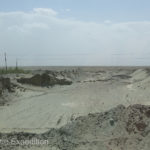
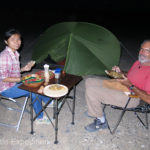





China is amazingly awesome, you can’t go anywhere without wanting a photograph because it’s just so UNIQUE!! Lambs on the top deck of a skinny cargo scooter! A woman rolling dough cross-legged! Embryo in an egg! Y’all have taken great photos of “real life” in China. By the way, that wire guard on the donkey is to prevent it from snatching fruits/veggies in the market 🙂 They’re adept at snatching while walking.